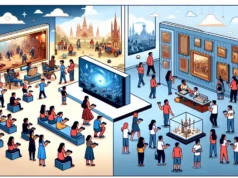In this digital age, it may be hard to imagine a time when it wasn’t possible to carry the world in our pockets — to tune into breaking news half a world away, or to watch a live concert from the comfort of our own homes. Livestreaming, a technology that was unimaginable barely a few decades ago, has now become a critical form of communication, entertainment, and information delivery for millions if not billions of people worldwide. As an increasingly popular content strategy for brands, social media platforms, and governments alike, its appeal and global reach are more tangible than ever before.
Livestreaming, for the uninitiated, refers to the process of transmitting or receiving video and/or audio coverage over the Internet in real-time, essentially allowing viewers to watch events as they happen. The technology was developed in the late 1990s as a solution for television networks looking to share their programming with online audiences. However, it has since evolved beyond its initial application, becoming an indispensable tool for individuals and organizations alike who want to share their stories, ideas, or events with the world in real-time.
From Facebook Live to YouTube, Twitch, and even platforms like TikTok that incorporate live elements – there’s been an explosion of livestreaming platforms, each offering varying features catering to different audience demographics. But, this is a mere snapshot of the larger truth – livestreaming has democratized content creation and consumption in ways that rewrote the rulebook on how we connect with the world.
Social media platforms and livestreaming go hand-in-hand; the former serves as a stage for the latter. Facebook, for instance, reported in 2020 that ‘Facebook Live’ broadcasts had doubled year-over-year in the midst of the COVID-19 pandemic. TikTok, though primarily known for its bite-sized videos, has leveraged livestreaming to host its own ‘Happy Hours’, providing entertainment while fostering a sense of community during lockdown.
Another significant creature of the livestreaming evolution is eSports, where players and fans from around the globe converge in real-time for professional video gaming. Platforms like Twitch, an Amazon subsidiary, have carved a niche for themselves accommodating this community. In 2020, Twitch clocked about 17 billion hours watched, marking a massive 83% surge from the year before.
Even though Twitch dominates the eSports streams, YouTube catches up when considering overall livestreaming. According to Streamlabs and Stream Hatchet’s Q3 report, YouTube saw over 1.5 billion hours of content watched, a commendable growth during a time when people stayed home and sought new ways to remain connected and entertained.
Livestreaming concrete events is another realm that has witnessed wide adoption. Even before the pandemic, livestreaming started to rewrite how we experience major events. Access to music festivals, sports events, and even educational conferences has been democratized via livestreaming, enabling anyone with an internet connection to participate and engage. As a result of COVID-19, this practice has been increasingly normalized from local municipal meetings to church services to even memorial services.
Moreover, this trend is not only consumer-facing but has permeated business practices as well. Corporations are utilizing livestreaming to host meetings, conferences, and product launches. Tech-giants Apple, Google, Microsoft, and others have made their keynotes accessible to millions around the world via livestreams, creating a global conversation around their products.
Despite these widespread applications of livestreaming, access to this technology is not equal globally, raising concerns about the digital divide. Broadband access varies dramatically from country to country, and within regions of the same country posing a challenge to the democratizing potential of livestreaming.
The challenge moving forward is to ensure that access to technology keeps pace with its advancements. Consequently, efforts to expand broadband infrastructures, lower data costs, and develop technologies for streaming at lower bandwidths are pressing.
In conclusion, livestreaming has become an integral part of our online ecosystem, facilitating real-time communication at an unprecedented global scale. As technology continues to evolve, so too will the ways in which we share and receive information, making the future prospects of livestreaming an exciting realm to watch.
Sources:
1. Facebook Reports Second Quarter 2020 Results, Facebook Newsroom, 2020
2. Live Streaming Statistics, Backlinko, 2020
3. Streamlabs & Stream Hatchet Q3 2020 Live Streaming Industry Report, Stream Hatchet, 2020
4. Broadband Commission advocates leaving no one behind, UN News, 2020






